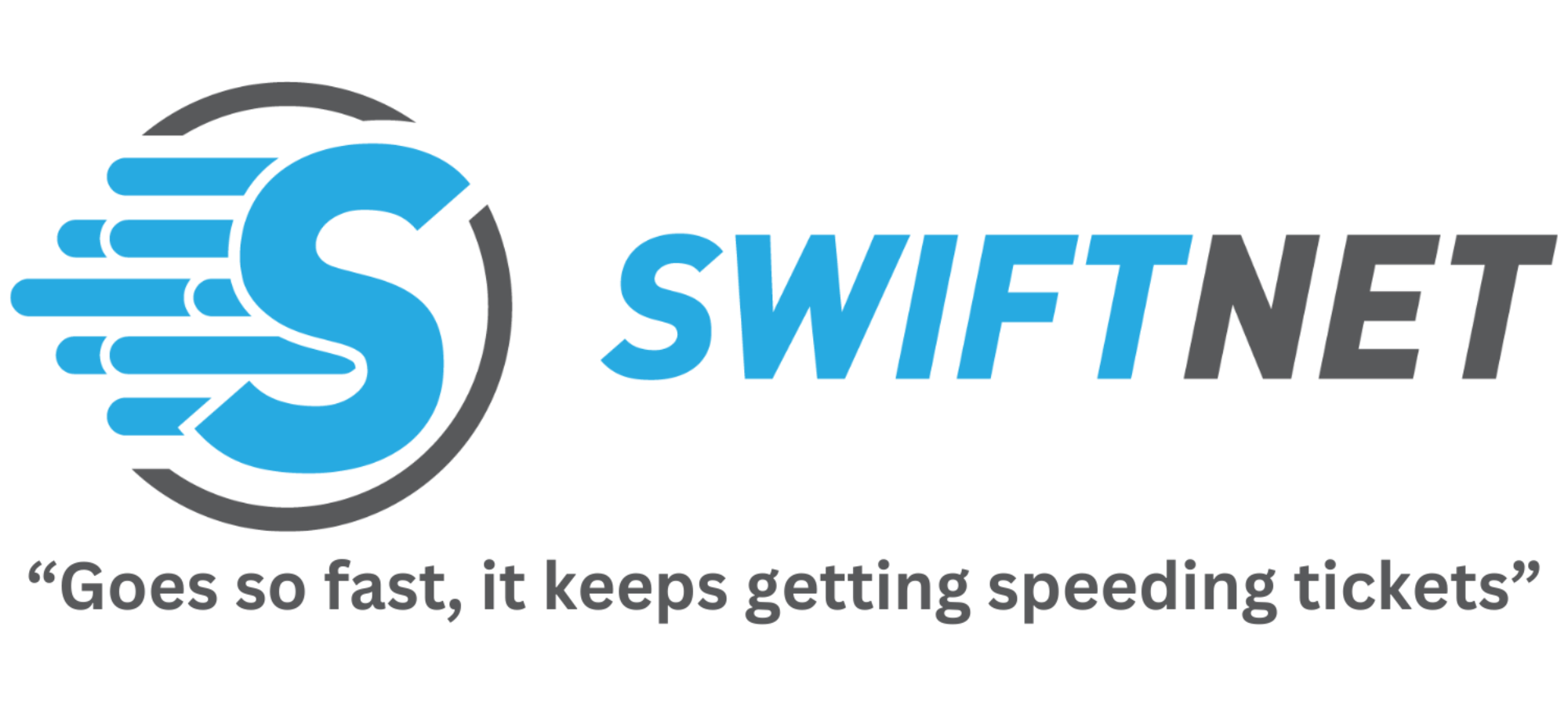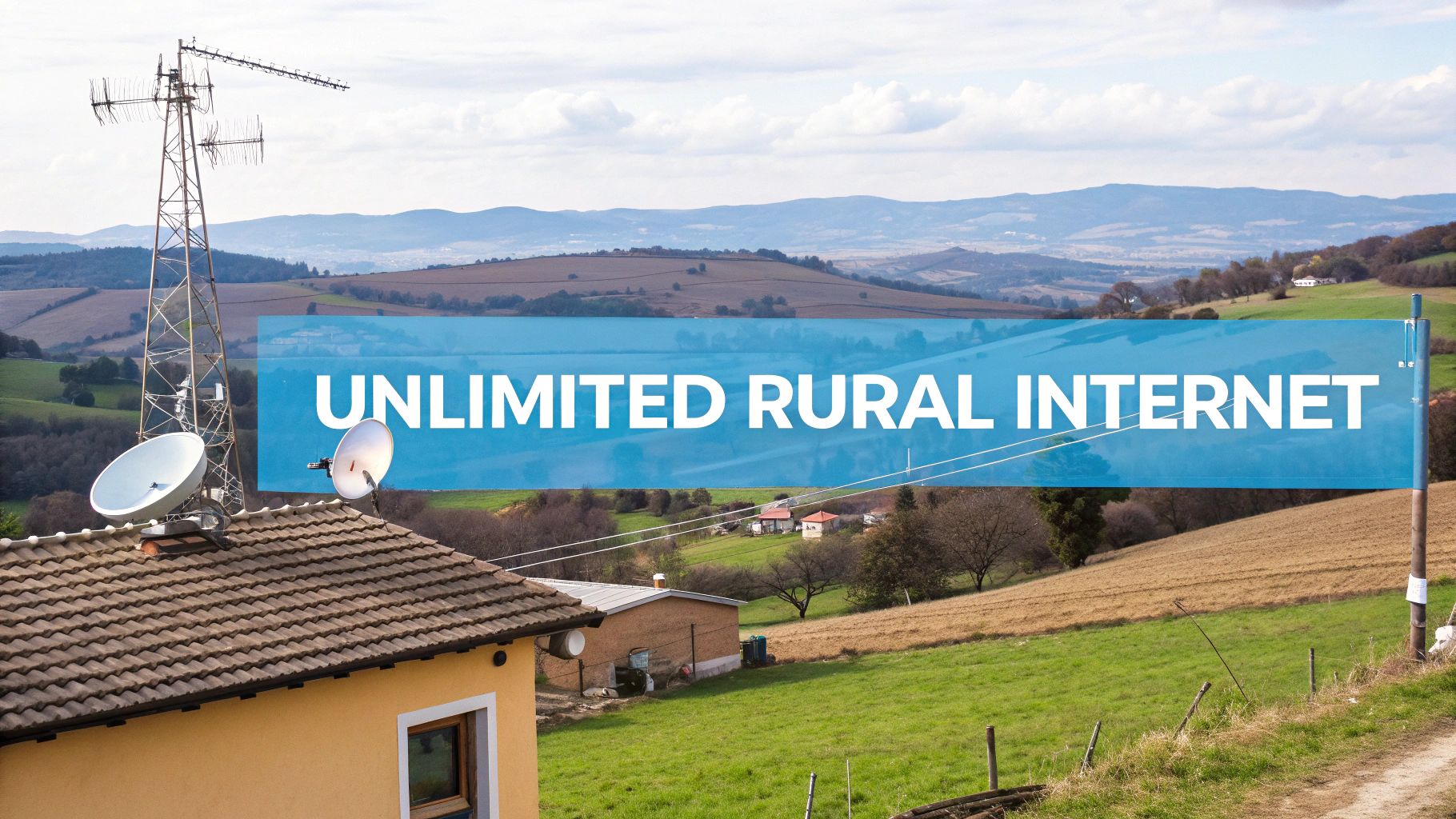

· By James
Top Options for Unlimited Internet in Rural Areas in 2025
Connecting the Countryside: Your Guide to Unlimited Rural Internet
Struggling to find reliable unlimited internet in rural areas? This list offers eight solutions for RV travelers, remote workers, and rural residents seeking connectivity in 2025. Discover options like Starlink, Viasat, and T-Mobile Home Internet, providing unlimited internet access where traditional providers fall short. We'll cover key tools like SwiftNet Wifi, HughesNet Gen5, Verizon LTE Home Internet, Rise Broadband, and Nomad Internet, helping you choose the best option for your needs.
1. SwiftNet Wifi
Finding reliable unlimited internet in rural areas can be a significant challenge. SwiftNet Wifi aims to solve this problem by providing high-speed 5G internet service specifically designed for rural residents and RV travelers who often struggle with unreliable or slow connections. Tailored to meet the unique challenges of remote and mobile lifestyles, SwiftNet delivers fast, dependable internet in areas where traditional fiber optics are unavailable. Whether you live in a rural home, work remotely, or travel in your RV, SwiftNet promises to keep you connected with strong, consistent online performance, enabling you to stream movies, participate in video conferences, or simply browse the web without interruption. This focus on mobility and serving underserved locations makes it a compelling option for those seeking unlimited internet in rural areas.
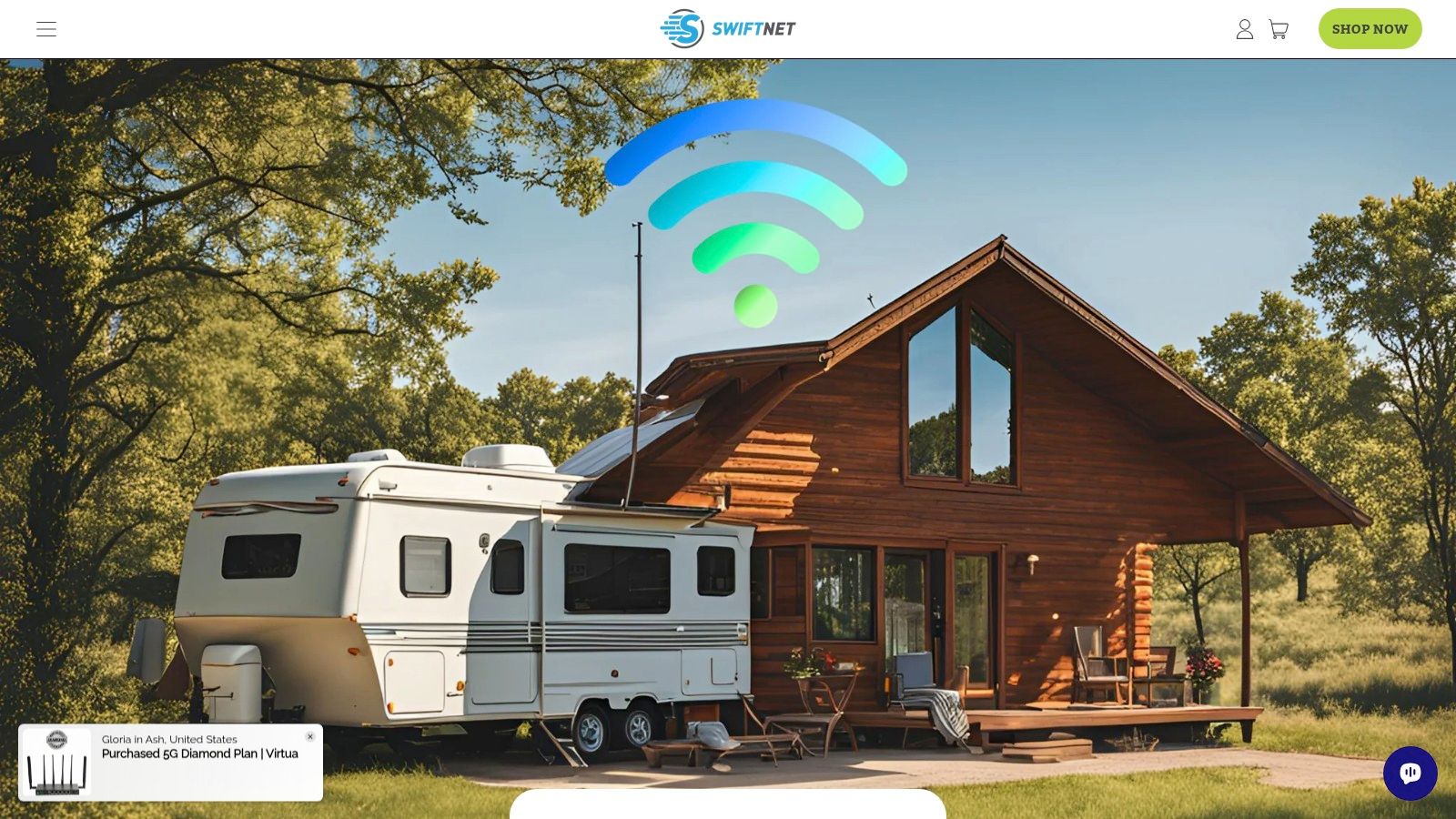
SwiftNet leverages advanced 5G technology to provide broadband-like speeds and low latency. This is a significant advantage over older satellite or DSL technologies often found in rural areas, which are notorious for slow speeds and high latency. For those working remotely, this means seamless video conferencing and fast file transfers. For RV travelers, it means staying connected on the go, being able to access work resources or entertainment platforms from anywhere. For rural residents, it offers a viable alternative to limited and often expensive traditional internet options. Imagine streaming your favorite shows in HD in a rural cabin or attending a virtual meeting from your RV without the frustration of buffering or dropped connections. SwiftNet aims to make this a reality.
While SwiftNet offers a compelling solution for unlimited internet in rural areas, it does have some limitations. One major drawback is the lack of transparent pricing information. Potential customers must inquire directly to obtain cost details, making it difficult to compare SwiftNet with other providers. Additionally, the service’s efficacy is inherently tied to 5G network coverage, which, while expanding rapidly, may still be patchy in extremely remote regions. Before committing to SwiftNet, it's crucial to confirm coverage availability at your specific location.
Pros:
- Reliable high-speed 5G internet access in rural areas lacking fiber optic infrastructure.
- Ideal for RV travelers and remote workers needing consistent connectivity on the go.
- Leverages advanced 5G technology for faster speeds and lower latency than typical rural internet options.
- Supports various online activities including streaming, video conferencing, and remote work.
- Addresses a crucial need for connectivity in underserved markets.
Cons:
- Pricing information is not readily accessible and requires direct inquiry.
- Service availability is contingent upon 5G network coverage, which may be limited in some remote areas.
Website: https://swiftnetwifi.com
SwiftNet Wifi deserves its place on this list because it directly addresses the critical need for reliable, high-speed internet in rural areas. Its focus on mobility and leveraging 5G technology makes it a compelling solution for a growing segment of the population seeking unlimited internet outside of urban centers. However, the lack of readily available pricing information is a definite drawback. Potential customers are encouraged to contact SwiftNet directly to discuss their specific needs and determine pricing and availability in their area.
2. Starlink
For those seeking unlimited internet in rural areas, Starlink is a compelling option. This satellite internet constellation from SpaceX delivers high-speed, low-latency broadband to even the most remote locations. By leveraging a network of low Earth orbit satellites, Starlink bypasses the need for traditional ground-based infrastructure, making it a viable solution where fiber optic or cable internet is unavailable or prohibitively expensive. This makes it particularly appealing to RV travelers, RV owners, and people living in rural areas without fiber optic internet, as well as those who work online remotely, whether from a fixed location or while traveling.
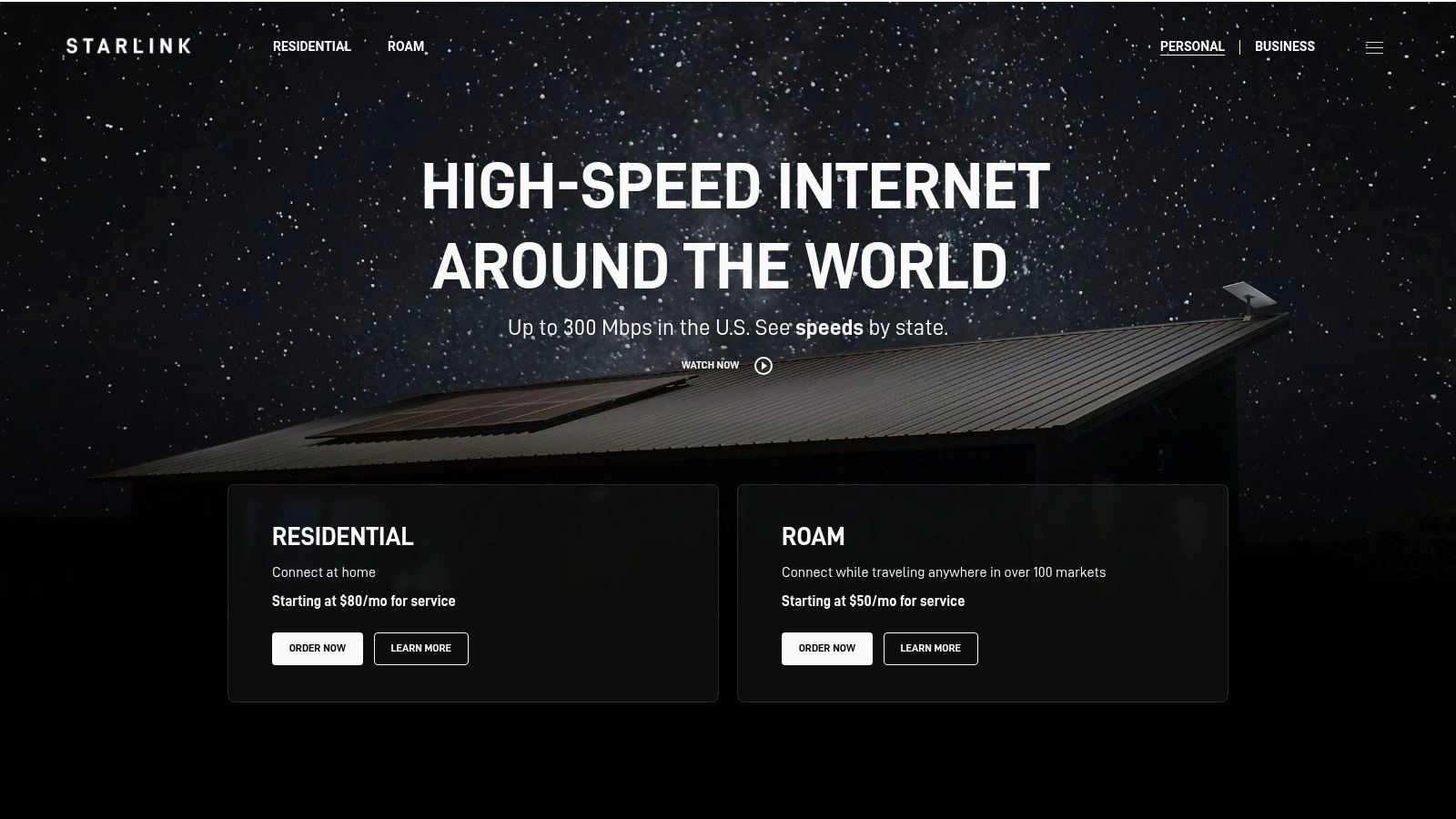
Starlink boasts download speeds between 50-200 Mbps and latency as low as 20-40ms, rivaling, and in some cases, exceeding, the performance of many terrestrial internet providers. Crucially for those who rely heavily on data, the standard residential service offers truly unlimited data with no throttling or data caps. This is a significant advantage over many other rural internet options, which often impose restrictive data limits. The equipment, consisting of a self-installable dish and Wi-Fi router, is designed for user-friendliness, and a mobile app simplifies setup and network management.
One of Starlink's biggest strengths is its availability. With a clear view of the sky, you can access the network virtually anywhere, opening up a world of possibilities for those living or working off the grid. Compared to traditional geostationary satellite internet, Starlink’s low Earth orbit network delivers significantly lower latency, making it suitable for activities like online gaming and video conferencing. Furthermore, no long-term contracts are required, offering flexibility for users. You can learn more about Starlink and its role in bridging the digital divide.
However, Starlink does have some drawbacks. The upfront equipment cost of $599 for the standard kit is a considerable investment. The monthly service fee of $120 is also relatively expensive compared to some terrestrial options, although the unlimited data and wide availability often justify the cost for rural users. Service can be affected by adverse weather conditions such as heavy rain or snow, and occasional outages may occur, particularly as the network is still technically in its beta phase.
Despite these limitations, Starlink represents a significant step forward for unlimited internet in rural areas. Its combination of high speed, low latency, and truly unlimited data makes it a powerful tool for anyone needing reliable internet access outside the reach of traditional providers. It deserves its place on this list for offering a practical, readily available solution to a persistent problem.
3. Viasat
Viasat is a prominent player in the satellite internet arena, making it a viable option for securing unlimited internet in rural areas, especially where other technologies like fiber optics and cable are unavailable. Viasat leverages a high-capacity satellite network to deliver service across the continental United States, catering specifically to those in rural locations struggling with limited connectivity. Their plans, often marketed as "unlimited" data, offer a specified amount of high-speed priority data. While data isn't completely cut off after this limit, speeds may be reduced during peak network congestion, impacting bandwidth-intensive activities. This makes Viasat a good option for general internet use in remote areas, but potentially less suitable for consistent high-bandwidth demands like competitive online gaming or large file transfers during peak hours.
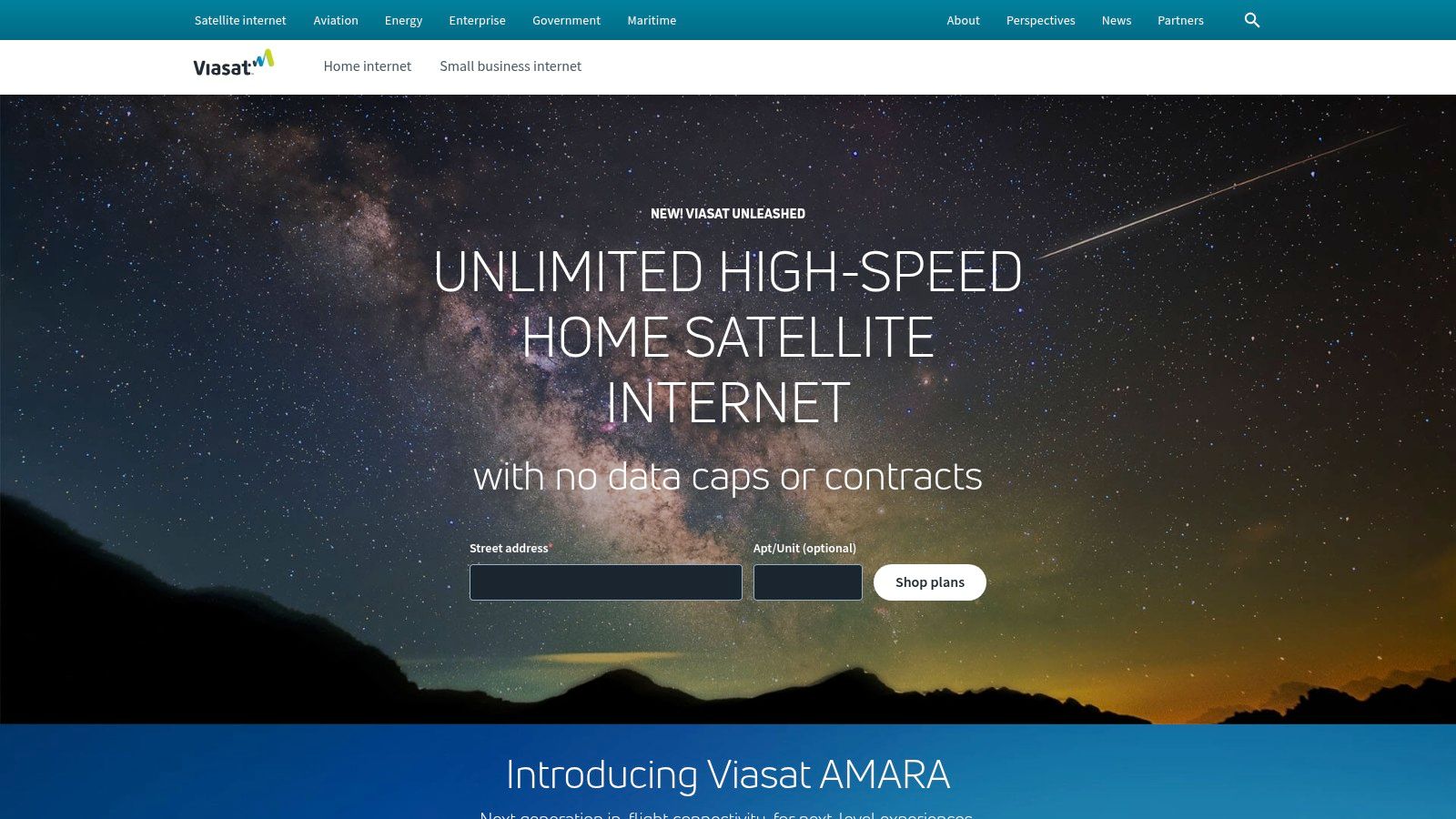
For RV travelers, RVers, remote workers, and those living off the grid, Viasat offers the promise of connectivity where few other options exist. Imagine checking emails from your mountain cabin, streaming movies in your RV, or attending a virtual meeting from a rural homestead – Viasat makes these scenarios possible. Download speeds can reach up to 100 Mbps in select areas, a significant advantage over slower DSL or dial-up alternatives often found in rural settings. Features like professional installation, a built-in WiFi modem/router, and 24/7 technical support streamline the setup process and provide peace of mind. Viasat also offers bundle options with DIRECTV, which can be a cost-effective solution for those seeking both internet and television services.
However, it's crucial to understand the limitations. The higher latency (typically 600-700ms) inherent in satellite internet can impact real-time applications like video calls and online gaming. While advertised as "unlimited," the tiered data system means your speeds can be throttled after you've used your priority data allowance. Furthermore, Viasat typically requires a two-year contract, and prices often increase after a promotional period, usually three months. Be sure to factor these details into your budget and consider your data usage patterns. Specific pricing details are readily available on the Viasat website, but expect to pay more than terrestrial options for comparable speeds.
Viasat's widespread availability and relatively high speeds compared to other rural internet solutions secure its place on this list. For those seeking unlimited internet in rural areas, Viasat provides a practical, albeit imperfect, solution. Before committing, carefully weigh the pros and cons, compare plans, and understand the implications of the "unlimited" data policy to ensure it aligns with your needs and expectations. You can explore plan options and availability on the Viasat website: https://www.viasat.com
4. T-Mobile Home Internet
For those seeking unlimited internet in rural areas, T-Mobile Home Internet presents a compelling fixed wireless solution. Leveraging T-Mobile's 4G LTE and 5G cellular network, it offers a viable alternative to traditional broadband, especially in areas where fiber optic or cable internet isn't readily available. This makes it a particularly attractive option for RV travelers, RV owners, and those living in rural areas without access to fiber optics, particularly individuals who work online remotely.
T-Mobile Home Internet distinguishes itself with its simple, predictable pricing. For a flat monthly rate of $50-$60 with autopay, you receive truly unlimited data. This means no data caps, overage charges, or throttling, making it ideal for bandwidth-intensive tasks like streaming, video conferencing, and online gaming. Taxes and fees are included in the monthly price, so there are no surprises on your bill. Furthermore, there are no equipment fees, as the self-install gateway, which converts the cellular signal to Wi-Fi, is included. T-Mobile also makes it easy to get started with no credit checks or deposits required.
Setting up T-Mobile Home Internet is remarkably straightforward. The self-install gateway simplifies the process, eliminating the need for a technician visit. Simply plug it in, connect your devices, and you're online. This ease of installation makes it a great option for those who are less tech-savvy or prefer a hassle-free setup.
While T-Mobile Home Internet offers significant advantages, it's important to be aware of its limitations. Service availability is highly dependent on your location's T-Mobile coverage. Speeds can vary between 35-115 Mbps based on network congestion and signal strength, so you'll want to check coverage in your specific area before committing. While T-Mobile is rapidly expanding its network, it's not available in all rural areas yet. Additionally, during peak usage times, your connection may be deprioritized, potentially leading to slower speeds.
Compared to satellite internet, which often suffers from high latency and data caps, T-Mobile Home Internet provides a much more responsive and reliable online experience. However, if you live in an area with strong 5G coverage, other 5G home internet providers might offer faster speeds. Learn more about T-Mobile Home Internet and the growth of rural 5G.
For those seeking unlimited internet in rural areas where T-Mobile coverage is strong, T-Mobile Home Internet provides a valuable and affordable option. Its simple pricing, ease of installation, and unlimited data make it a compelling alternative to traditional internet service providers, particularly for travelers and those working remotely who need reliable and affordable internet access. You can check availability and learn more at https://www.t-mobile.com/home-internet.
5. HughesNet Gen5
For those seeking unlimited internet in rural areas where terrestrial options are unavailable, HughesNet Gen5 often emerges as the solution of last resort. Leveraging geostationary satellites, HughesNet delivers consistent coverage across the continental US, making it a viable choice for even the most remote locations. While it might not compete with the speeds of fiber or cable internet, HughesNet offers plans with "unlimited" data, ensuring you can stay connected even when exceeding your monthly data allowance. This makes it a valuable tool for RV travelers, RV owners, and individuals working remotely from rural areas without fiber optic internet.
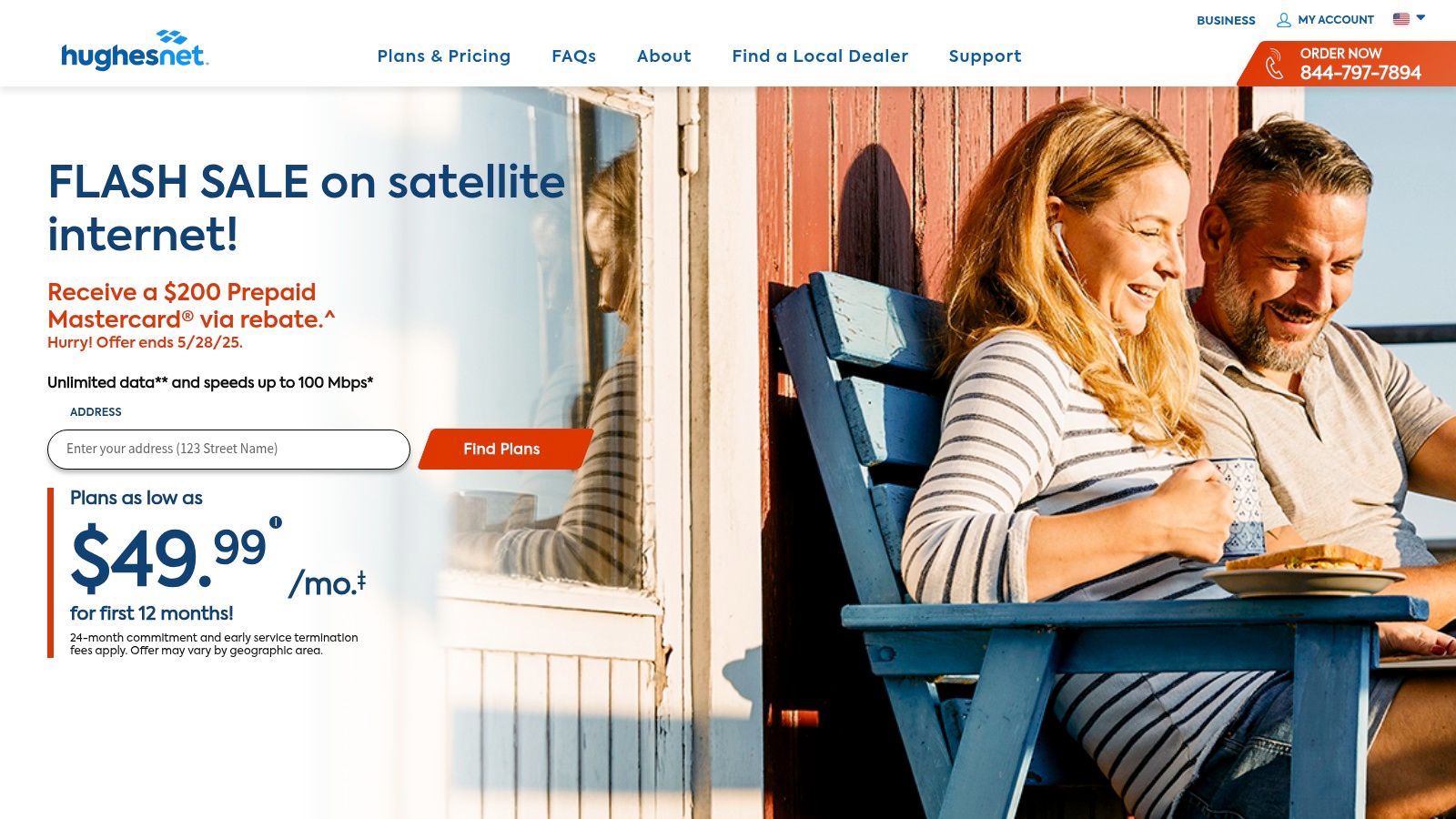
All HughesNet Gen5 plans advertise download speeds of 25 Mbps. This consistent speed, regardless of location, is a significant advantage for users in remote areas where other internet options might struggle. Plans range from 15 GB to 100 GB of full-speed data per month. Once this allowance is reached, speeds are reduced to 1-3 Mbps, sometimes referred to as the "soft data cap". While this reduced speed is sufficient for basic web browsing and email, it's important to consider the impact on data-intensive tasks like streaming and video conferencing. However, the included Bonus Zone, offering 50 GB of additional data during off-peak hours (2 am-8 am), can be particularly beneficial for scheduling large downloads or backups overnight.
The HughesNet Gen5 system includes a built-in WiFi modem and router, simplifying the setup process. Professional installation is also included, ensuring the satellite dish is correctly aligned for optimal performance. Equipment can be purchased outright or leased, offering flexibility depending on your budget and long-term plans. Be aware that two-year contracts are standard with HughesNet.
Pros:
- Availability virtually anywhere in the continental US
- Consistent 25 Mbps speeds (before reaching data allowance)
- No hard data cutoffs (service continues at reduced speeds)
- Bonus Zone data for off-peak usage
- Professional installation included
- Equipment purchase or lease options
Cons:
- Significantly reduced speeds (1-3 Mbps) after data allowance is used
- High latency (600+ ms) impacting real-time applications like gaming and video calls
- Two-year contracts
- Higher cost per GB compared to terrestrial internet options
Implementation Tip: For those working remotely or relying heavily on internet connectivity, carefully assess your data usage needs. Consider the impact of the reduced speeds after exceeding the data allowance and strategize your usage to maximize the benefits of the Bonus Zone.
While the higher cost and latency issues may be drawbacks, HughesNet Gen5 offers a crucial connection for those in rural areas lacking alternative options for unlimited internet access. For those prioritizing consistent connectivity over speed, HughesNet provides a reliable solution. You can explore their plans and options further on their website: https://www.hughesnet.com
6. Verizon LTE Home Internet
For those seeking unlimited internet in rural areas, Verizon LTE Home Internet offers a viable fixed wireless solution, particularly where traditional wired connections fall short. Leveraging Verizon's expansive 4G LTE and 5G networks, this service bypasses the need for cable or fiber optic installations, making it a practical choice for remote workers, RV travelers, and rural residents with limited internet options. It provides a competitive alternative to satellite internet, especially in terms of latency.
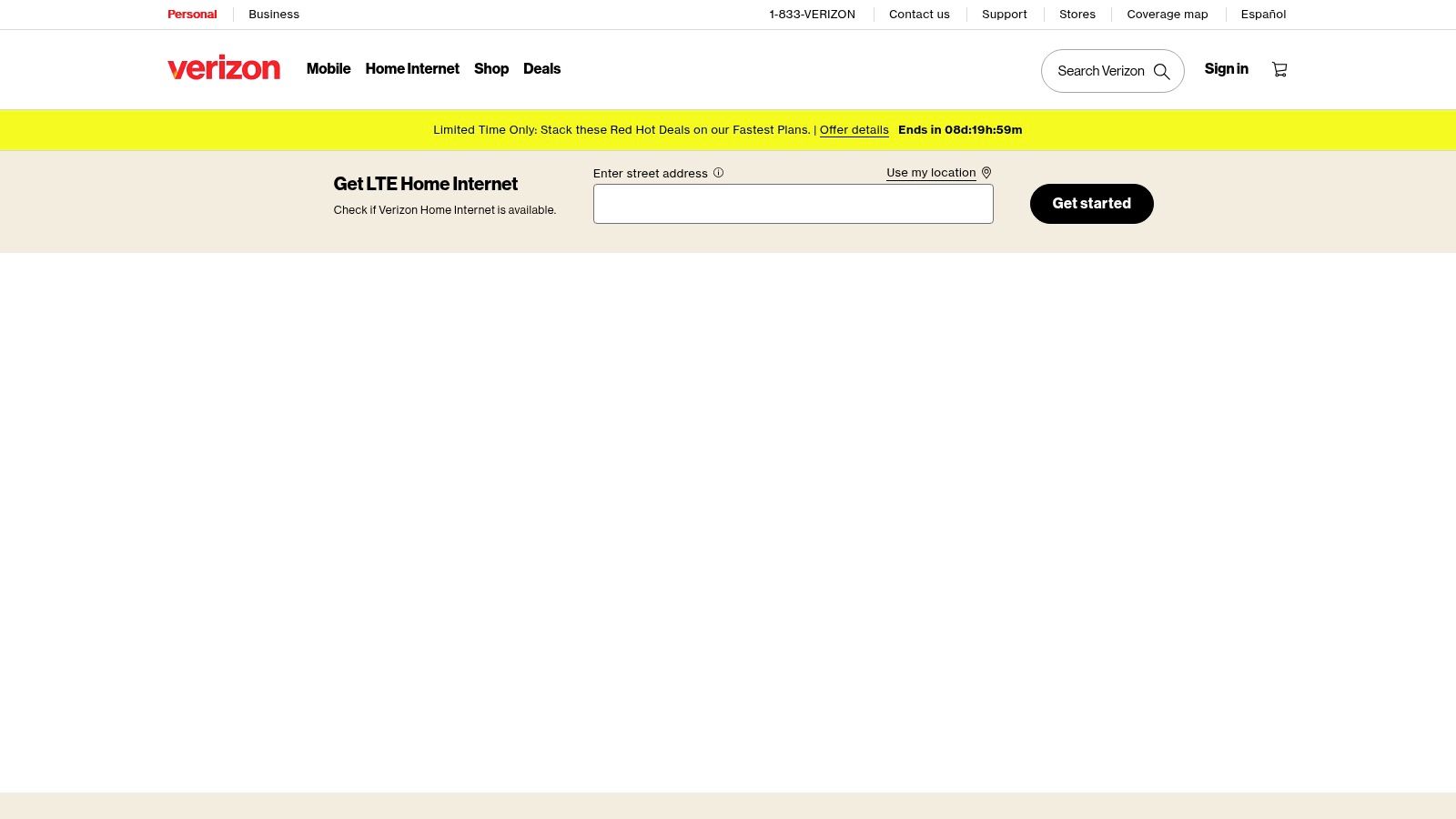
Verizon LTE Home Internet shines with its truly unlimited data plan—no caps and no throttling after a certain usage limit. This is crucial for those who rely heavily on the internet for work, streaming, or online gaming. Typical download speeds range from 25-50 Mbps, which is sufficient for most online activities, although it's worth noting that speeds are location-dependent and can fluctuate based on network congestion and signal strength. The self-install LTE Home Router simplifies setup and avoids the hassle of technician visits. The no-contract flexibility also makes it appealing for RV owners or those who relocate frequently, allowing them to subscribe on a month-to-month basis. Pricing starts at $60/month for existing Verizon Wireless customers, offering a potential cost saving for those already within the Verizon ecosystem.
Practical Applications and Use Cases:
- Remote Workers: Stay connected with reliable internet access for video conferencing, file sharing, and other work-related tasks.
- RV Travelers: Enjoy consistent internet access on the road without relying on campground Wi-Fi.
- Rural Residents: Access high-speed internet in areas with limited wired infrastructure.
- Online Gamers: Benefit from lower latency compared to satellite internet, improving online gaming experiences.
- Streaming Enthusiasts: Stream movies and TV shows in HD without worrying about data caps.
Technical Requirements and Setup:
The primary requirement is a strong Verizon cellular signal at your location. Check Verizon's website for coverage availability. Setup is straightforward with the included self-install LTE Home Router. Simply plug in the router, connect your devices, and follow the on-screen instructions.
Comparison with Similar Tools:
Compared to satellite internet, Verizon LTE Home Internet generally offers lower latency, which is critical for real-time applications like video calls and gaming. However, its availability is tied to Verizon's cellular network coverage, unlike satellite internet which can reach almost anywhere. Compared to DSL or cable internet, LTE Home Internet might have slower maximum speeds, but offers greater flexibility in terms of location and contracts.
Pros:
- Unlimited data with no caps
- Lower latency than satellite internet
- No installation fees or equipment costs
- Discounts for existing Verizon Wireless customers
- Flexible no-contract service
Cons:
- Limited availability (requires good Verizon coverage)
- Speeds can vary based on network congestion and signal strength
- May be deprioritized during times of network congestion
- Higher base price than some alternatives
Website: https://www.verizon.com/home/lte-home-internet/
Verizon LTE Home Internet earns its spot on this list by offering a practical and convenient solution for unlimited internet in rural areas, bridging the digital divide for those beyond the reach of traditional wired services. It's an especially attractive option for those already within the Verizon ecosystem and prioritize the convenience of a no-contract plan.
7. Rise Broadband: A Fixed Wireless Solution for Unlimited Internet in Rural Areas
For those seeking unlimited internet in rural areas, Rise Broadband presents a compelling fixed wireless option. Unlike satellite internet, which often suffers from high latency, or cellular internet, which can be unreliable in remote locations, Rise Broadband offers a middle ground. This makes it a particularly attractive option for RV travelers, RV owners, remote workers, and those living in rural areas without fiber optic internet access. Leveraging a network of towers that transmit signals directly to receivers installed at customers' homes, Rise Broadband bypasses the need for traditional wired infrastructure.
Rise Broadband earns its place on this list by offering truly unlimited data plans without throttling, a crucial feature for anyone working or streaming online. This commitment to unlimited data is a major advantage over some cellular plans that impose data caps or slow down speeds after a certain threshold.
How Rise Broadband Works:
Rise Broadband's fixed wireless technology relies on line-of-sight between your home and a nearby tower. A professional installation is required, involving placing a receiver on the exterior of your home to capture the signal. This signal is then converted into usable internet within your house, similar to how a traditional wired connection would work.
Features and Benefits:
- Speeds: Offers speeds from 25 Mbps to 100 Mbps in covered areas, suitable for streaming, online gaming, and video conferencing. While not as fast as fiber, these speeds are often significantly better than satellite or limited cellular options.
- Unlimited Data: Provides unlimited data plans with no data caps or throttling, ensuring consistent performance even with heavy internet usage.
- Professional Installation: Includes professional installation of the receiver, minimizing the technical burden on the customer.
- Local Service: Operates in 16 states across rural America, offering localized customer service in many markets.
- VoIP Phone Service: Provides optional VoIP phone service, allowing for cost-effective home phone solutions in areas with limited traditional phone lines.
Pros:
- Lower Latency: Offers lower latency (30-40ms) than satellite internet, resulting in a more responsive online experience for activities like gaming and video calls.
- Stable Connection: Provides a more stable connection than cellular internet in many rural areas, where cell signals can be weak or inconsistent.
- No Data Caps: Unlimited plans come with no data caps, enabling worry-free internet usage.
- Local Customer Service: Offers local customer service in many areas, potentially providing better support than national providers.
Cons:
- Limited Availability: Service availability is dependent on proximity to a Rise Broadband tower and line-of-sight, limiting coverage to specific rural areas within 16 states.
- Line-of-Sight Requirement: Requires an unobstructed line-of-sight between the receiver and the tower. Trees, hills, or other obstacles can impact performance.
- Weather Sensitivity: Performance can be affected by severe weather conditions such as heavy rain or snow.
- Installation Fee: Typically requires an installation fee, adding to the initial setup cost.
Pricing and Technical Requirements:
Pricing information is available on the Rise Broadband website and varies depending on location and chosen plan. Confirming service availability for your specific address is crucial before considering Rise Broadband. Technical requirements primarily revolve around the line-of-sight necessity, which a technician will assess during the installation process.
Implementation/Setup Tips:
- Check availability on their website: Use the address checker on the Rise Broadband website to determine if service is available in your area.
- Prepare for the installation: Ensure clear access to the exterior of your home where the receiver will be installed.
- Discuss placement options with the technician: Communicate any preferences for receiver placement to minimize visual impact and maximize signal strength.
Rise Broadband offers a viable solution for unlimited internet in rural areas where other options fall short. While limitations exist regarding availability and weather dependence, its focus on unlimited data and lower latency than satellite makes it a worthwhile consideration for those seeking reliable internet access in remote locations.
8. Nomad Internet
Nomad Internet offers a compelling solution for unlimited internet in rural areas, specifically targeting those underserved by traditional wired connections. Leveraging 4G LTE and 5G networks from all major carriers, Nomad acts as a reseller, bundling unlimited data plans with specialized equipment designed to maximize connectivity in challenging rural environments. This makes them a valuable option for RV travelers, rural homeowners, remote workers, and anyone else struggling to find reliable internet outside of major cities.
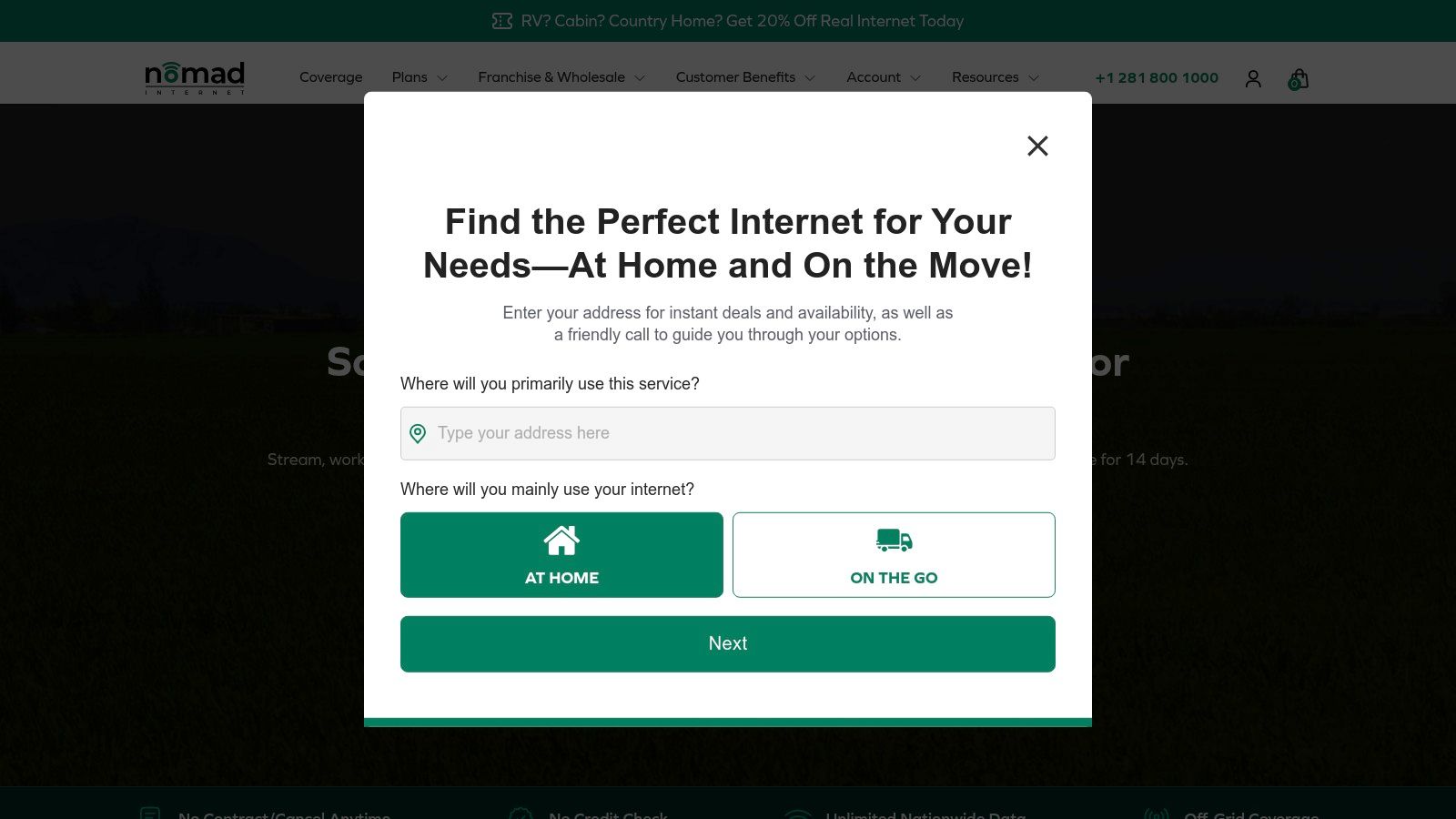
Unlike traditional fixed-location internet providers, Nomad Internet offers portability through its range of routers. These routers are designed specifically for rural and low-signal areas, offering improved reception and performance compared to standard consumer-grade equipment. This portability makes Nomad a particularly attractive option for RV owners and travelers who work online remotely, enabling them to maintain a consistent internet connection wherever they go, provided there's a cellular signal available. You can learn more about Nomad Internet and its various offerings for 2025.
Nomad Internet boasts truly unlimited data on all plans, meaning no data caps or throttling. They work with all major carrier networks and match customers to the best available network in their specific area. The absence of contracts and credit checks further simplifies the signup process, allowing users to quickly get online without lengthy commitments. Their specialized technical support team also understands the unique challenges of rural connectivity and can provide tailored assistance for troubleshooting and optimization.
However, this flexibility and specialized service comes at a price. Nomad Internet's plans generally range from $129 to $179 per month, which is significantly higher than many direct carrier plans. Additionally, while Nomad uses multiple networks, users may still experience network priority issues during periods of congestion. The performance is ultimately dependent on local tower capacity and distance, and although the equipment is designed for weak signal environments, limitations still exist. Finally, while some plans offer router rentals, others require an equipment purchase ranging from $0 to $499 depending on the model.
Despite the higher cost, Nomad Internet's unique combination of unlimited data, specialized equipment, and focus on rural connectivity makes it a viable solution for those seeking reliable unlimited internet in rural areas where other options are limited or nonexistent. The ability to switch between carrier networks for optimal performance and access dedicated technical support adds significant value for users in remote locations.
Unlimited Internet Solutions Comparison
| Strategy | Implementation Complexity 🔄 | Resource Requirements 💡 | Expected Outcomes 📊 | Ideal Use Cases 💡 | Key Advantages ⭐ |
|---|---|---|---|---|---|
| SwiftNet Wifi | Moderate - requires 5G coverage and compatible device setup | Moderate - access to 5G network, device needed | High-speed, low-latency internet for rural/mobile use | Rural homes, RV travelers, remote workers needing mobility | Reliable 5G in underserved areas, good speed & latency |
| Starlink | Moderate - self-install satellite dish and setup app | High - upfront equipment cost and monthly fee | Fast speeds (50-200 Mbps), low latency satellite internet | Remote locations lacking infrastructure | Wide availability, no data caps, low latency for satellite |
| Viasat | High - professional installation typically required | Moderate - equipment and plans with priority data | Speeds up to 100 Mbps with data prioritization | Rural areas needing stable but occasionally throttled service | Good speeds for satellite, wide US coverage |
| T-Mobile Home Internet | Low - simple self-install gateway | Low - gateway included with flat monthly rate | Moderate speeds (35-115 Mbps), unlimited data | Rural homes in T-Mobile coverage areas | Simple pricing, no contracts, no equipment fees |
| HughesNet Gen5 | High - professional installation required | Moderate - plans with data limits and equipment | 25 Mbps with reduced speeds after data cap | Very remote rural areas as last-resort option | Wide availability, consistent base speeds |
| Verizon LTE Home Internet | Low - self-install router | Moderate - included router with monthly service | Speeds 25-50 Mbps, unlimited data | Rural homes with strong Verizon cellular coverage | No contracts, no equipment fees, lower latency than satellite |
| Rise Broadband | High - professional installation | Moderate - requires line-of-sight equipment | Speeds 25-100 Mbps, low latency fixed wireless | Rural homes near towers needing stable wireless | Unlimited data, low latency vs. satellite, local service |
| Nomad Internet | Low to Moderate - portable router, no contracts | High - equipment purchase + higher monthly cost | Unlimited data on multiple LTE/5G networks | Extremely remote rural areas with varying coverage | Carrier flexibility, optimized equipment for weak signals |
Staying Connected: Making the Right Choice for Your Rural Internet Needs
Finding reliable unlimited internet in rural areas can feel like searching for a needle in a haystack. This article has explored several key players, from satellite internet providers like Starlink, Viasat, and HughesNet Gen5 to fixed wireless and cellular options like T-Mobile Home Internet, Verizon LTE Home Internet, Rise Broadband, and Nomad Internet. We've also looked at SwiftNet Wifi as a potential solution. Each option comes with its own set of advantages and disadvantages concerning speed, availability, data limits, and of course, price. The most important takeaways are to thoroughly research availability in your specific location and prioritize your individual needs. Do you need high speeds for video conferencing? Are you primarily concerned with consistent uptime for essential tasks? Understanding these needs will guide you towards the right solution.
If you're exploring internet options for rural areas because you work remotely, perhaps even operating a drone-based business, you'll need reliable connectivity. For those interested in entering the drone industry, resources are available to help you get started, such as guidance on starting a UAV business from Dronedesk. When implementing any of the tools discussed, consider factors like installation complexity, equipment costs, and contract terms. Don’t hesitate to contact providers directly to discuss your specific needs and clarify coverage details.
Choosing the right unlimited internet in rural areas empowers you to stay connected, whether for work, leisure, or staying in touch with loved ones. For a comprehensive solution tailored to rural connectivity challenges, consider exploring SwiftNet Wifi. They offer a variety of plans designed to meet the unique needs of rural internet users. Learn more and find a plan that's right for you at SwiftNet Wifi.

